“‘We are all subject to the fates. But we must all act as if we are not . . . or die of despair.'”
—from The Golden Compass by Philip Pullman
words to inspire before you expire
“‘We are all subject to the fates. But we must all act as if we are not . . . or die of despair.'”
—from The Golden Compass by Philip Pullman
“‘You en’t gyptian, Lyra. You might pass for gyptian with practice, but there’s more to us than gyptian language. There’s deeps in us and strong currents. We’re water people all through, and you en’t, you’re a fire person. What you’re most like is marsh fire, that’s the place you have in the gyptian scheme; you got witch oil in your soul. Deceptive, that’s what you are child.'”
—from The Golden Compass by Philip Pullman
Hello again, class.
I would put E. M. Forster’s A Passage to India in the same boat as Graham Greene’s The Quiet American and V. S. Naipaul’s A Bend in the River—a novel on cultural clash, with one nation invading another and a set of characters caught in the racial, international chaos. But where Greene and Naipaul are too cynical and become trapped by racist misrepresentations, Forster’s treatment of racial and cultural tension is careful and even kind, without being naive to its origins or consequences. For that, I enjoyed A Passage to India and highly recommend it.
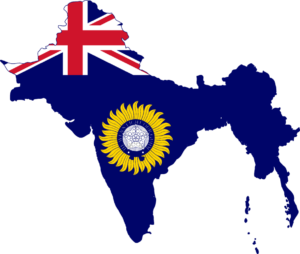
A flag map of the British Raj, the British rule over India between 1858-1947. A Passage to India takes place in the 1920’s, during the period of the British Raj.
I had never even heard of A Passage to India before seeing it on the list, so I imagine most don’t know the story. In the fictional town of Chandrapore, the English Mr. Fielding and Indian Dr. Aziz befriend Mrs. Moore, who has come to visit her son Ronny, Chandrapore’s city magistrate. Mrs. Moore has brought her young friend Adela, who is potentially her son’s fiancee. This newly formed group decides to visit the Marabar Caves, and what happens there forces the subtle racial tensions within them to explode, affecting the entirety of Chandrapore.
In A Bend in the River and The Quiet American, the protagonists are limited by their own racism, which is shown as an ingrained trait as natural as our own desires. But the treatment of race in A Passage to India reminds me of To Kill a Mockingbird—it shows racism as a disease. It infects many characters, but not all, and the ones who rise above such racism are punished by the society affected by the disease.
Specifically for A Passage to India, we move between the minds of each character and see their own struggles with race and racism. Characters like Mrs. Moore and Aziz have a poetic and compassionate view of the world, while Mrs. Moore’s own son thinks with bureaucracy and practicality, even with matters concerning marriage. Ronny views the Indian population as a group who needs governance, while Mrs. Moore believes her role in India is to show kindness to others. In each character, the topic of race—of psychology, humanity, and nationality, too—takes a subtly different form, and each character believes in their own version of racial truth.
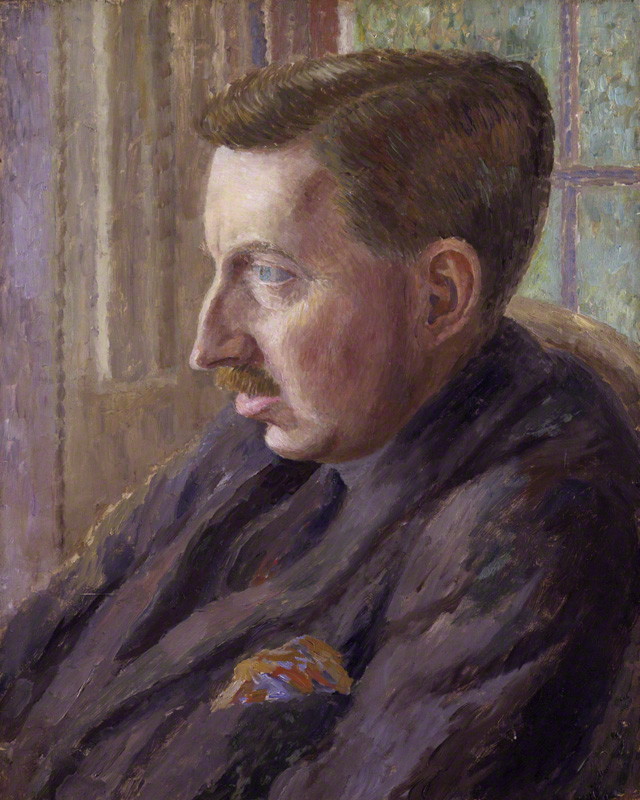
E. M. Forster, author of A Passage to India. Portrait by Dora Carrington, oil on canvas, 1920.
The story itself can’t have much said about it—it’s well-balanced and careful, to the point that it’s forgettable. The strength in A Passage to India is E. M. Forster’s total understanding of society and of human nature.
I’m willing to bet that most white writers handle race and racism poorly. Forster shouldn’t be any different, but he is (though that opinion is from another white writer, so take that opinion with a grain of salt). I think, in part, that his careful and compassionate management of race stems from understanding the nature of an outsider, which comes from being a minority himself—though the larger public didn’t know, Forster lived his life as a homosexual man. In England at the time, homosexuality was considered illegal activity, so Forster’s identity was a crime. He could easily imagine the loneliness and stress of being considered criminal by nature, much like the Indians in his novel tend to feel around the English.
Don’t get me wrong: race and sexual orientation compare very little, even in the larger scope of societal treatment. Forster’s hidden minority hardly matches the visibility of racial tension. But the feeling of being an outsider, even in a place one considers home, is something Forster likely knew very well—and it translates to the subtleties of A Passage to India. It feeds into the natural cynicism of the plot, highlighting the inability to rise above prejudice, but Forster handles that cynicism with more grace than most authors do. It made A Passage to India good.
Next up, I’m finishing the His Dark Materials Trilogy, which I’ve been reading for some time now. I won’t say much yet . . . except that I haven’t felt this good about a series since I read Harry Potter. But I’ll save the rest for later!
Until next time,
Prof. Jeffrey
“In Europe life retreats out of the cold, and exquisite fireside myths have resulted—Balder, Persephone—but here the retreat is from the source of life, the treacherous sun, and no poetry adorns it because disillusionment cannot be beautiful. Men yearn for poetry though they may not confess it; they desire that joy shall be graceful and sorrow august and infinity have a form, and India fails to accommodate them.”
—from A Passage to India by E. M. Forster
“It matters so little to the majority of living beings what the minority, that calls itself human, desires or decides. Most of the inhabitants of India do not mind how India is governed. Nor are the lower animals of England concerned about England, but in the tropics the indifference is more prominent, the inarticulate world is closer at hand and readier to resume control as soon as men are tired.”
—from A Passage to India by E. M. Forster
Welcome back, class.
I’ll start with the concerning fact that Virginia Woolf doesn’t have a single work on the list. And, to follow up: out of 50 titles on the list, ten are composed by women. So today is about Virginia Woolf’s 1927 novel, To the Lighthouse.
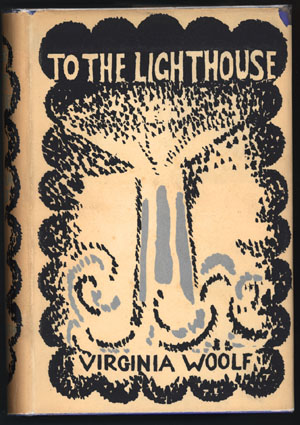 Virginia Woolf is one of those hallmark authors who stand out by reputation alone, regardless of sex as a qualifier, while still being one of the clearer representatives of feminism known in literature. The fact that she has no novel on the 50-books list highlights the fact that so many other women are left off of it, too.
Virginia Woolf is one of those hallmark authors who stand out by reputation alone, regardless of sex as a qualifier, while still being one of the clearer representatives of feminism known in literature. The fact that she has no novel on the 50-books list highlights the fact that so many other women are left off of it, too.
So either the creators of this list actually tried and failed to find an appropriate amount of female authors, which hints at incompetence (hence, my Missing From the List posts); or, even worse, they deliberately chose all books by male authors and decided in retrospect to throw a bone toward diversity, and the female authors they did choose are featured simply to meet a diversity quotient (and that’s just considering female authors—for authors of racial and other minorities, you’ll have to hear this rant in a separate post).
Either way, the misogyny is strong with this one.
After such a rant, though, I have to admit I’ve only read one of Woolf’s works—but it was really good! To the Lighthouse is a beautiful work of modernist fiction that is special not because of the story, but because of its meaning and the way it’s told. For more on what modernism is, look at my previous post on it.

The Isle of Skye, where the action of To the Lighthouse takes place.
The novel is separated into three parts. Part 1, “The Window,” takes place on one evening in 1910, while the Ramsay family visits their vacation home on the Isle of Skye. We meet the characters and understand their complicated dynamics. Then there’s part 2, “Time Passes,” which is a fluid and ambiguous portrayal of ten years of time, encompassing World War I and the deaths of many major characters in the family. Finally, part 3, “The Lighthouse,” takes place on another evening in 1920, when the family returns to their vacation home as almost completely new people.
The story’s strength is it’s symbolism. The lighthouse represents an unreachable goal, and the terrible weather is the natural world that attacks and hinders humanity’s endeavors. The link between the two evenings, separated by ten years of time, is portrayed through the painting one character works on for those ten years, incomplete without the passage of time—just like the novel itself, incomplete without the strangeness of part 2, loosely stringing together the beginning and the end of Woolf’s novel. Through such symbolism, To the Lighthouse is careful, artistic, experimental, and wonderfully strange, and belongs on the list simply because of what it’s able to do.
 Something I tend to forget about modernism is its obsession with time. Novelists from this period liked to portray the unreliability of time by reorganizing chronological order, speeding up and slowing down the story, and confusing a single moment with an eternity. Virginia Woolf fit right in with these modernists—entire chapters in parts 1 and 3 of To the Lighthouse take place in seconds, while part 2 speeds through ten years in no time at all. The action of parts 1 and 3 is also mostly internal, letting stream-of-consciousness explain characters and their motivations—something modernism all but invented.
Something I tend to forget about modernism is its obsession with time. Novelists from this period liked to portray the unreliability of time by reorganizing chronological order, speeding up and slowing down the story, and confusing a single moment with an eternity. Virginia Woolf fit right in with these modernists—entire chapters in parts 1 and 3 of To the Lighthouse take place in seconds, while part 2 speeds through ten years in no time at all. The action of parts 1 and 3 is also mostly internal, letting stream-of-consciousness explain characters and their motivations—something modernism all but invented.
Which brings me to a complicated point. In a lot of ways, this novel reminds me of Ulysses—need I remind you, one of my favorite novels ever. To the Lighthouse may never match Ulysses in my eyes, but it comes closer than most novels because it does everything Ulysses does (challenges convention, scrambles time, uses stream-of-consciousness to tell a better story, etc.), to the point that if I wanted someone to try Ulysses, I might have them read To the Lighthouse first.
And if To the Lighthouse accomplishes what Ulysses does, and it’s easier on the brain to boot, maybe To the Lighthouse should be on the list INSTEAD of Ulysses (which hurts me to write, I assure you). I’m noticing that there are works on the list that shouldn’t be read—studied or made aware of, absolutely, but not “cozy-up-with-on-the-couch” read. The Bible, The Divine Comedy, The Canterbury Tales, and Ulysses are each books on the list that make more sense as references and less sense as cover-to-cover reading challenges.

Author Virginia Woolf
On a list called “50 Books to Read Before You Die,” there should be books that readers can gain something from. Books like Ulysses fly a little to close to the sun for readers to enjoy, whereas a book like To the Lighthouse (while in no way an easy novel) allows readers the chance to fly as well.
To bring it back to feminism, and the lack of it featured on the list, here’s a post I made back in March (National Women’s History Month) on the great women writers I know.
Part of the reason To the Lighthouse should be on the list, even in place of Ulysses, is because it’s more accessible. But more importantly, Virginia Woolf’s lifetime statement on behalf of female authors allows To the Lighthouse to have something Ulysses only hopes to have: the voice of the female artist. This is more than the idea of a diversity quotient. This is about representation of female authors, and how statements of all kinds—novels, plays, poems, paintings, stories—when represented mostly by one kind of person, are incomplete statements.
I am still reading A Passage to India by E. M. Forster, another representative of modernism and of a minority—but more on that next class.
Until then,
Prof. Jeffrey
“There is no harm in deceiving society as long as she does not find you out, because it is only when she finds you out that you have harmed her; she is not like a friend or God, who are injured by the mere existence of unfaithfulness.”
—from A Passage to India by E. M. Forster
A conversation about India between Ronny and his mother:
“‘We’re not out here for the purpose of behaving pleasantly!’
‘What do you mean?’
‘What I say. We’re out here to do justice and keep the peace. Them’s my sentiments. India isn’t a drawing room.’
‘Your sentiments are those of a god,’ she said quietly, but it was his manner rather than his sentiments that annoyed her.
Trying to recover his temper, he said, ‘India likes gods.’
‘And Englishmen like posing as gods.’
—from A Passage to India E. M. Forster
Good morning, class.
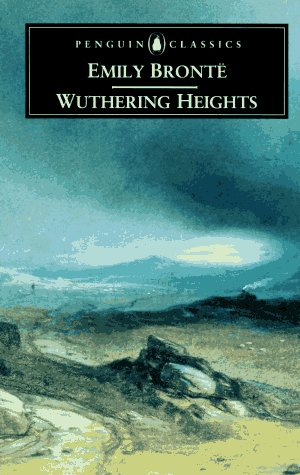 It’s easy to see the similarities between Charlotte Brontë’s Jane Eyre and her sister Emily Brontë’s Wuthering Heights. In both stories, the swampy moors of the English countryside set an atmosphere of oppressive weariness and longing. The romances tracked in both novels have drama seeping through the pages—lies, betrayal, terrible passion, and a man too mysterious to ever fully trust.
It’s easy to see the similarities between Charlotte Brontë’s Jane Eyre and her sister Emily Brontë’s Wuthering Heights. In both stories, the swampy moors of the English countryside set an atmosphere of oppressive weariness and longing. The romances tracked in both novels have drama seeping through the pages—lies, betrayal, terrible passion, and a man too mysterious to ever fully trust.
But I think it’s easier to talk about Jane Eyre, at least in terms of plot—our heroine Jane begins as an orphan, and we follow her journey into adulthood and into her romance with Mr. Rochester. Wuthering Heights is much murkier. Instead of any hero, we get a cluster of characters surrounding the villainous Heathcliff, one of the more disgusting characters I’ve ever read in a novel. He enters the narrative, destroys almost everything around him, and remains a mysterious stain on everyone’s happiness until the final pages of the novel, where a happy ending barely scrapes by from the debris in his wake. And so Wuthering Heights leaves its mark.
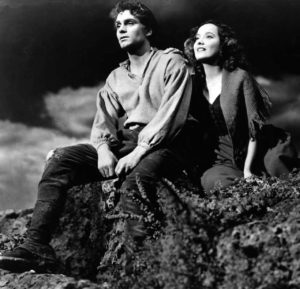
Heathcliff and Catherine, portrayed by Laurence Olivier and Merle Oberon in Wuthering Heights (1939)
The main narrative follows Heathcliff and Catherine Earnshaw in a tortured romance. Heathcliff is brought back to the Wuthering Heights estate as a child by Mr. Earnshaw, where he meets the young Catherine and her brother Hindley. They grow up together, and Catherine and Heathcliff realize their attraction to each other, but obstacles get in the way. Heathcliff runs away, and Catherine decides to marry their neighbor Edgar Linton instead. When Heathcliff returns, he has enough money to enact revenge on those who kept him and Catherine apart.
Heathcliff swindles Wuthering Heights from Hindley (and from Hindley’s son Hareton) while marrying Edgar’s sister to punish both Edgar and Catherine. They each have children: Linton is Heathcliff’s son, and Catherine’s daughter is named Catherine (simply to confuse matters further). The elder Catherine dies while giving birth, and Heathcliff prays that her soul never rest—that she haunt him until he dies.
Fast-forward about 18 years, and Hareton, Catherine, and Linton have all grown up. They are the product of tortured love, revenge, and heartbreak, with Heathcliff the only surviving member of the first generation. Without giving too much away, the three of them try to right the wrongs of the past and revolt against Heathcliff’s tyranny—to be what their parents couldn’t be.
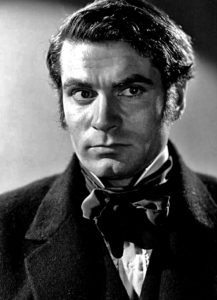
Laurence Olivier as Heathcliff in Wuthering Heights (1939)
Heathcliff is the reason to read Wuthering Heights. I called him one of the more disgusting characters I’d ever read in a novel, and that’s because there so much villainous life breathed into him by Emily Brontë that he’s stood the test of time. His origins are unknown—both his heritage and his means of getting money—and hatred seems to come easier to him than love.
His relationship with Catherine is simply a mess. They seem to enjoy each other in childhood, both a little more unkempt and uncontrollable than most children. As outsiders they grow fond of each other. But in adulthood they punish each other as signs of love. They wrap up the Lintons into their mess and ruin the Lintons’ happiness—Edgar is in a loveless marriage and must compete with Heathcliff’s rage, while his sister Isabella is tricked into marrying Heathcliff who cares nothing for her.
After Catherine’s death, Heathcliff regularly digs up Catherine’s corpse and cries over it. He is ultimately disgusted with his son Linton and forces him to marry the younger Catherine so that he can inherit Edgar’s estate. Without a doubt, Heathcliff is a nightmare. Characters speculate if he is some kind of demon or imp. He has no pity for the people he hurts and delights in suffering. His obsession with Catherine is only matched by her obsession with him, and the only real question about his motivations is whether or not their relationship does more damage than he himself does.
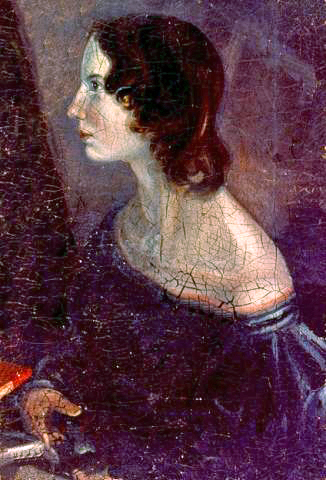
Emily Brontë
Is Brontë’s writing strong? Absolutely—ahead of its time, even. Is the story worth reading? I’d say so—the plot is intricate and chaotic, in the best way. But Heathcliff is what makes Wuthering Heights special, and he’s why it made the list.
I like to think there isn’t a moral to the story, but if there is one, it’s about a bad kind of love vs. a good kind. The bad kind of love is the one that destroys and poisons, that’s so passionate and full of emotion that it can’t survive. Then there’s a patient, practical love—one that doesn’t hurt, and yet still wins out against obstacle. The love between Heathcliff and Catherine is destructive, but maybe the next generation can share a better love, despite the effects of the the generation before.
Up next, I’m reading E. M. Forster’s A Passage to India—one of the few books on the list I’ve never heard of before. Let’s hope it’s good!
Prof. Jeffrey
“The intimacy, thus commenced, grew rapidly, though it encountered temporary interruptions. Earnshaw was not to be civilized with a wish; and my young lady was no philosopher, and no paragon of patience; but both their minds tending to the same point—one loving and desiring to esteem, and the other loving and desiring to be esteemed—they contrived in the end to reach it.”
—from Wuthering Heights by Emily Brontë
© 2025 50 Books to Read Before You Die
Theme by Anders Noren — Up ↑
Recent Comments